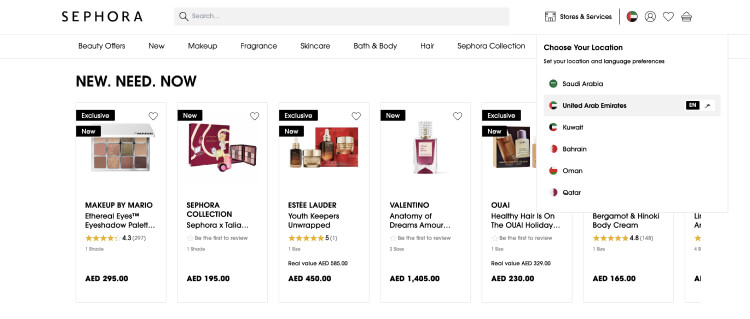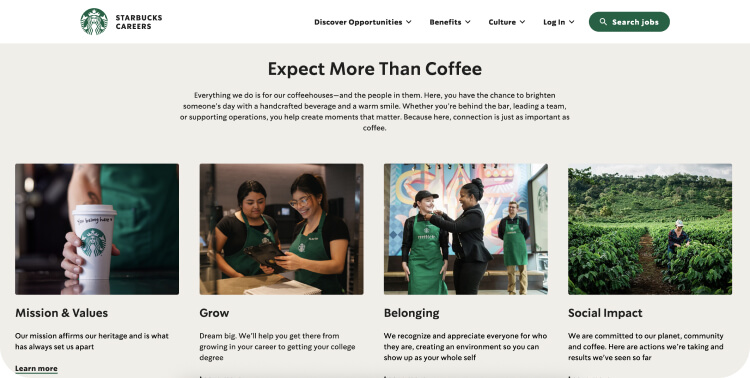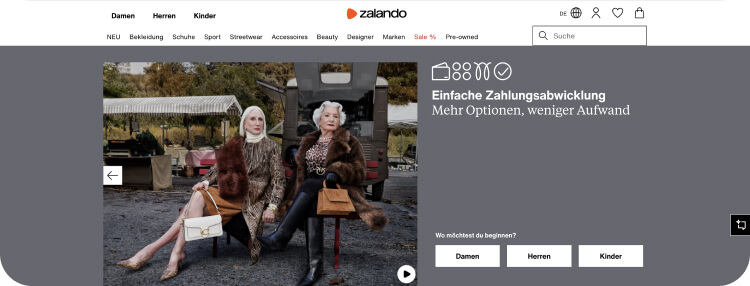Ever tried selling to a new market and realized… well, nothing happens? Traffic doesn’t grow, users disappear fast, and the “global expansion” is condemned to failure and looks like a bad idea.
But the opportunity is definitely there. The global ecommerce market is exploding in 2025, retail ecommerce sales are expected to exceed $4,3 trillion worldwide, with no signs of slowing down. That’s a massive chance for growth… and a lot of competition.
Here’s the truth: going global isn’t as simple as translating your website. Every target market has its own way of buying: preferred payment methods, shipping expectations, cultural references, and even humor. If your store feels foreign to global customers, they simply won’t buy, no matter how good your product is.
So, how do you win the hearts and carts of customers worldwide?
You may ask, “What should I do? How can I actually sell globally and succeed?” Ecommerce localization is a great solution in this case. It makes your ecommerce store feel native, as if it were built for customers right next door.
Sounds a bit difficult, right? No worries, in this article, we’ll show you why localised customer support is a must for your business and how to do it with real benefits for your growth.
What Is Ecommerce Localization?
Before we dive into the benefits, let’s get clear on what ecommerce localization really means. Simply put, it’s adapting your website and product information to match the culture, language, and rules of an international market.
And no, it’s not just about translating text, we’re talking about adjusting currencies, payment options, date and time formats, visuals, and even imagery so your store feels like it was made for that region. These details play a huge role in successful market expansion, helping your brand connect with customer’s location.
To do it right, you need to focus on the unique needs and cultural nuances of a target market. Tailor your content, design, and functionality to create a seamless, relatable experience for users everywhere. Consumers prefer websites that feel familiar and intuitive, with language, visuals, and features that reflect their everyday lives.
A UK-based skincare brand entering Japan would need a localized website, with Japanese product descriptions, visuals featuring Japanese customers, and payment apps popular in Japan, such as PayPay or Konbini. These adjustments not only make the localized shopping experience feel familiar but also boost customer satisfaction by showing attention to local needs and preferences.
What You Gain from Ecommerce Localization
Going global without an ecommerce website localization approach is like stepping into a target market blindfolded. You never know what will work or what might turn your customers away. Ecommerce localization gives you the tools to succeed and deliver real results in every region you enter. Here’s how it benefits you:
- Reach new markets: With ecommerce localization, you can expand into foreign markets you may not have considered and capture potential customer segments. At the same time, you’ll boost your visibility with content optimized for local search engines, driving more organic traffic to your shop.
- Reduce cart abandonment: You give your cross borders shoppers the payment options and content they know and trust, making it easier for them to complete purchases without hesitation. By tailoring your store to local preferences, you create a smoother experience that keeps international customers coming back.
- Create a localized shopping experience: You can show products, visuals, and recommendations that truly resonate with each market. Combine this with multilingual support to make communication easy and natural for every visitor. This personalized approach enhances customer engagement, making your store feel familiar and trustworthy, as if it was designed just for them.
- Simplify multi-region operations: You can manage region-specific stores with multiple currencies, shipping options, and local features. This flexibility is essential for global businesses looking to provide a seamless experience across different markets.
- Build customer trust and loyalty: You speak their language, respect their culture, and meet their consumer expectations. By creating a shopping experience your customers love, you turn first-time visitors into loyal repeat buyers.
- Increase conversions and sales: You adapt pricing, payment methods, and delivery options to local preferences. By removing barriers that stop people from buying, you’ll improve the online shopping experience, boost conversion rates, and grow your revenue.
So you see, ecommerce localization brings a lot to the table. You’ll reach new markets, attract more international customers, and create a unique shopping experience. Yes, it takes time and resources, but a one-size-fits-all approach for diverse clients simply won’t work.
How to Build an Ecommerce Localization Plan That Works
Now that you understand the value of ecommerce website localization, it’s time to focus on the steps that will help you build and implement it effectively. The key is to make sure each step is done thoroughly and correctly so you deliver a seamless customer experience.
Step 1: Set up your website for globalization
Think of this step as laying the foundation for your global success. Prepare your website and systems to handle multiple languages, currencies, and design preferences. Don’t worry, your code can handle right-to-left languages like Arabic or even vertical text for Japanese. You’re setting the stage for smooth expansion that will help you reach more customers and increase sales.
Tip: Test one page in every language early to catch layout issues before scaling.
For example, Sephora is an ecommerce brand that has expanded into the Middle East and adapted its website for Arabic. They mirrored navigation menus, adjusted layouts for right-to-left reading, and tailored product images and promotions to match local preferences. These changes helped the brand connect with potential customers more effectively and build stronger relationships in a new target market.
Step 2: Adapt your products to local markets
Bring a local touch to your products for every market you enter. Adapt descriptions, images, and even packaging. Little things, like using metric instead of imperial measurements, can make a big difference, helping your brand connect with customers and drive international growth.
Tip: Check local competitors to see what language, imagery, and style your audience expects.
Nike adapts its product pages and campaigns for different countries. In Japan, they highlight local athletes and use metric measurements for shoe sizes. In the U.S., they feature American athletes and use imperial sizing. This flexible approach helps Nike stay relevant and competitive across global markets while connecting more deeply with its target audience in each region.
Step 3: Align your brand with local culture
Connect your brand with local culture and values. Celebrate regional festivals or traditions in your promotions and watch how your audience responds. These personal touches create trust and loyalty in multiple countries.
Tip: Survey international customers or hire native content creators to avoid cultural missteps.
Starbucks tailors its marketing campaigns and store experiences to local cultures. In China, they celebrate the Mid-Autumn Festival with special drinks and packaging featuring lanterns, while in India, they incorporate local flavors like Masala Chai into seasonal offerings. This approach helps Starbucks create a seamless shopping experience that feels familiar and relevant to customers everywhere.
Step 4: Automate repetitive localization tasks
Work smarter, not harder. Use tools to handle translations, adjust currencies, and sync inventory across regions. Intelligent automation helps you meet regional preferences while keeping everything consistent, so you can focus on growth instead of tedious tasks.
Tip: Integrate automation with your CMS and ecommerce platform to keep all regions consistent.
Zalando personalizes content and promotions per country. They use automated translation and product catalog management to keep hundreds of localized stores consistent across markets. This strategy allows them to scale efficiently and stay competitive in global markets while delivering a tailored experience to every shopper.
Step 5: Test and optimize
Keep refining and testing your store in every market. A smooth, user-friendly shopping experience builds confidence and keeps your online international shoppers coming back.
Tip: Treat each market as a unique opportunity. Localization is your ticket to building trust, boosting conversions, and growing globally.
IKEA regularly tests its regional websites to optimize navigation, checkout flows, and product information. For instance, the Swedish IKEA site has subtle differences in layout, product recommendations, and promotions compared to its U.S. or Chinese sites.
With these simple steps in your ecommerce localization, you’ll set your shop up for global success and smooth operations in diverse markets. The key is to conduct thorough market research and identify unique cultural peculiarities so you can seamlessly incorporate them into your ecommerce business.
What Role Does AI Play in Ecommerce Localization?
AI implementation has made ecommerce localization faster, smarter, and more cost-effective. With AI, you can automate routine tasks, reduce errors, and deliver personalized customer experiences. Here’s how it works:
- Automated translation and content adaptation: AI understands context, tone, and cultural nuances to create content that resonates locally. Paired with human review, it ensures efficient localized customer experience.
- Dynamic personalization: AI models analyze user behavior, preferences, and regional trends to tailor experiences. Your website layout, product recommendations, and pricing can automatically be adjusted by location. And even your localised customer support can be optimized to match the needs and expectations of each region. So, every online shopper feels like your store was built for them.
- Quality assurance: Maintaining consistency across markets is easier with AI. It spots translation errors, flags culturally sensitive content, and ensures compliance with local regulations in a target region.
- Faster implementation: AI speeds up localization by auto-generating product descriptions, updating currencies, and syncing shipping options. Shopify’s AI tools help global sellers automate region-specific updates and launch campaigns quickly.
Forbytes’ AI Ecommerce Agent for your online store
At Forbytes, we created an AI Ecommerce Agent that works right inside your store and can assist you with ecommerce localization. It helps you create better content, understand your customers faster, and optimize product data, all in just a few clicks. The main use cases of it are:
- For Content: No more writing every product description manually.
Generate unique, high-quality website content in a local language, pick the right tone of voice, and keep your catalog consistent across multiple regions. Don’t forget adapting product descriptions to reflect local terminology, cultural references, and customer expectations, so each listing feels natural and relatable to shoppers. - For Images: Upload a product image and let AI do the heavy lifting.
It extracts key attributes like color, category, material, or style and uses them to create SEO-friendly descriptions that attract the right shoppers. - For Reviews: Stop sorting through endless feedback on your own. AI analyzes sentiment, highlights urgent issues, and even suggests personalized responses to build trust and strengthen customer loyalty.
Need Assistance with Ecommerce Localization?
The ecommerce localization process is a key part of your globalization strategy. The better you adapt to cultural differences and communicate in your customers’ native language, the higher the chances your online store will succeed in a target market.
With ecommerce website localization, you can reach new markets, expand your audience, and boost conversions and sales. The key is to build an effective strategy and partner with a reliable tech provider who can support your online store, including offering localised customer support to enhance the overall customer experience in multiple countries.
At Forbytes, we help retailers with ecommerce development and localization. As a result, our clients operate not only in their local regions but also successfully expand to global ones. Plus, with our AI Ecommerce Agent, our clients can easily adapt their product content and customer communication to local needs.
Contact us if you strive for the extension of your business, and we’ll assist you with ecommerce development and localized customer support.

Our Engineers
Can Help
Are you ready to discover all benefits of running a business in the digital era?

Our Engineers
Can Help
Are you ready to discover all benefits of running a business in the digital era?












